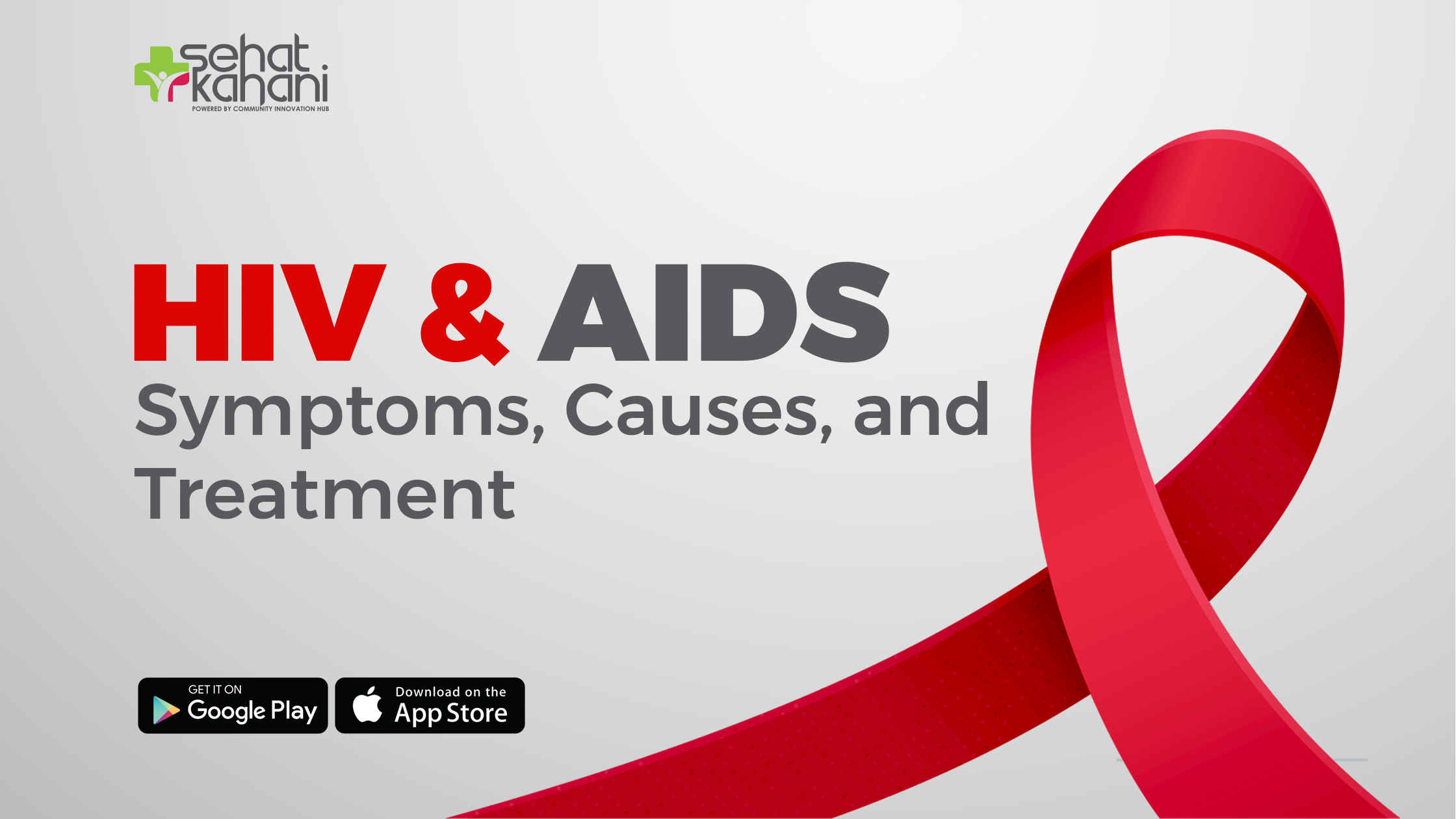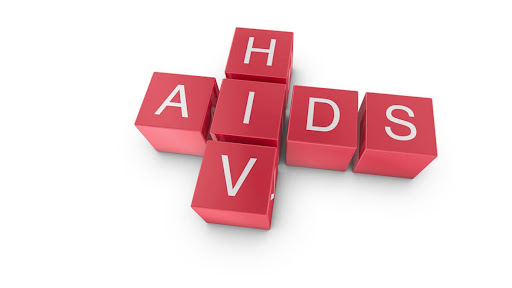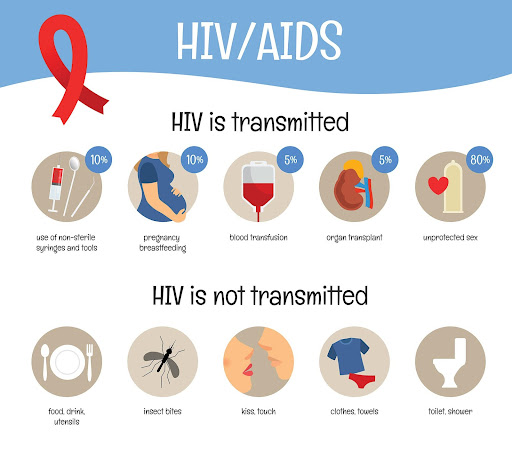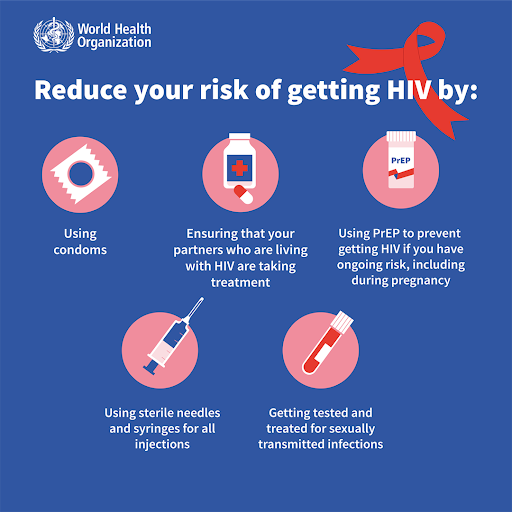
Introduction
HIV and AIDS are two very known words. However, there still exists a lot of confusion between these two little terms. Are HIV and AIDS the same thing? Are these the names of two different diseases? What are the symptoms of HIV and AIDS, and how is it caused? And why are the patients of AIDS looked down on? Well, the following blog will not only help to clear up the confusion between the two terms, but will also educate you regarding the disease, its transmission, its cause, and its treatment options.
Are HIV and AIDS the same thing?
HIV and AIDS are two terms indicating two different things. AIDS, which stands for Acquired Immune Deficiency Syndrome, is an autoimmune disease. The disease is caused by a virus called HIV, standing for Human Immune Virus. When HIV enters the body, it attacks the cells of the body which are responsible to protect the body against infections. Without these cells, the body becomes more vulnerable to various infections and diseases. With time, the body gets more and more infections leading to AIDS. Sadly, nothing can guarantee a complete cure for HIV. So If an individual gets HIV, they have it for life. However, with proper treatment, its symptoms can be managed and its transfer into the newly born via their HIV-positive mothers can be prevented to a significant degree.

How is AIDS caused?
When an individual’s body is infected by HIV by the following explained ways of transmission, it infects the white blood cells of the body, particularly CD4 cells (helper T cells). Since white blood cells are responsible for the defense of the body, HIV infection destroys the immunity of the body and makes the body more prone to various sicknesses. It starts from normal flu-like symptoms which usually go unnoticed. Meanwhile, the virus slowly destroys the T-cells of the body developing the infection to become AIDS.
What are the ways of transmission of HIV?
There are various ways of transmission of HIV from one individual to another. It is important to know that for an individual to get HIV infection, infected blood, vaginal secretion, or semen MUST enter your body. HIV cannot transmit from other contacts which do not involve the above mention bodily secretions. For instance, you cannot get HIV from dancing, shaking hands, hugging, or kissing since it does not transmit through air or water. HIV cannot even transmit from insect bites.
Following are the common ways by which semen, infected blood, and vaginal secretion can enter your body.
Having unprotected sex
One can get HIV infection by vaginal, anal, or oral sex with an individual who is infected with HIV as by all doing so, blood, semen, and vaginal secretions can enter your body. The virus can also enter the body during sexual intercourse through mouth sores, and tears that may present in the rectum or vagina.
By sharing needles
Sharing needles and syringes can transmit HIV and other infectious disease agents via blood contamination.
By blood transfusion
In most cases, the blood which is to be transfused is already screened for multiple types of infections. However, in low-income countries, all of these tests are not performed which can result in the transmission of HIV infection via blood transfusions.
Through breastfeeding or during pregnancy
HIV-positive pregnant women can transfer the infection to their developing babies. HIV can also transmit via breastfeeding. However, with the advancements in technology and medicine, HIV treatment during pregnancy can decrease the risk of transfer.

What are the common symptoms of HIV and AIDS?
There are many symptoms of HIV infections and AIDS. However, one should not wait for the symptoms to surface rather get tested to be sure. HIV tends to damage the immune system and cause degradation of the CD4+ T cells. In the absence of the guards of immunity, the body of the patients gets susceptible to various illnesses. The common symptoms include;
- Dry cough
- Persisting diarrhea
- Neurological disorders
- Memory loss
- Swollen lymph glands
- Depression
- Tiredness
- Unexplained rapid weight loss
- Reddish, pink, or purple blotches on the skin
- Pneumonia
- Increased sweating in sleep
- Recurring fever
- Blemishes on the skin and in the mouth
- White spots and blemishes in the throat
- Colored blotches on mouth, nose, or eyelids
Other than these symptoms, many other infections might surface owning to the compromised immunity caused by HIV. Such infections are called opportunistic infections. These infections in normal conditions are not able to harm the health of an individual. However, with a damaged immune system, they get an opportunity to cause disease. Following are some common symptoms that represent the development of opportunistic infections in patients with AIDS.
- Shortness of breath
- Continued coughing
- Coma
- Fever
- Extreme fatigue
- Nausea and vomiting
- Abdominal cramps
- Confusion and forgetfulness
- Decreased body coordination
- Seizures
- Continued diarrhea
- Weight loss
- Loss of vision
- Extreme headache
The symptoms of HIV AIDS in women include changes in periods, lower belly pain, unusual discharge, fever, pain during sex, and frequent yeast infections. Whereas, specific symptoms of HIV AIDS in men include low sex drive, erectile dysfunction, breast tissue growth, decreased hair growth, sores on penis and burning sensation in peeing.
Complications accompanied by HIV and AIDS
AIDS being a condition of suppressed immunity can lead to many complications. The common infections that may develop include
Pneumocystis pneumonia (PCP)
It is a type of pneumonia that is caused by fungi. The usual treatment of HIV and AIDS has mainly declined this infection in patients. However, it is still the most common pneumonia-causing agent in HIV-infected people.
Candidiasis
Candida is a yeast-like fungus that can cause a fungal infection called candidiasis. Candida typically coexists with healthy skin and parts of the body like the mouth, throat, gut, and vagina without posing any health risks. However, in patients with AIDS, it causes inflammation in these areas.
Tuberculosis
Tuberculosis is a disorder of the lungs, however, it can also have an impact on the stomach (abdomen), glands, bones, and nervous system. TB is estimated to be the leading cause of death in individuals with AIDS.
Cytomegalovirus
Cytomegalovirus is a common herpes virus that can spread through body fluids. The harms of this virus are usually tackled by a healthy immune system of the body. However, in individuals with AIDS, this virus cause disorders in the digestive system, lungs, eyes, and other organs.
Cryptococcal meningitis
As suggested by the name, meningitis is the inflammation of the meninges (fluid-filled membranes which surround the brain and spinal cord). Cryptococcal meningitis is the type of meningitis caused by a fungus present in the soil. This fungus also cause disorder in individuals with compromised immunity due to the presence of HIV infections.
Toxoplasmosis
Toxoplasma gondii is a single-celled organism that causes an infection called toxoplasmosis. For a person with a weaker immune system, toxoplasmosis can also result in severe lung or brain disease in addition to catastrophic eye disease. Rarely, the infection may spread to different body tissues.
HIV/AIDS-related cancers
HIV infections and AIDS can also lead to the development of lymphomas, Kaposi’s sarcoma, and HPV-related cancers including anal, cervical, and oral cancers.
Other complications
Along with the above-mentioned problems, HIV infection can also be the root cause of many other problems including wasting syndrome, confusion, forgetfulness, anxiety, loss of balance, depression, severe dementia, chronic weakness, fever, diarrhea, and kidney and liver diseases.
What are the treatment options for HIV/AIDS?
The treatment of HIV is called Antiretroviral Therapy or ART. This therapy helps to control the virus mostly within six months with the help of pills or shots. It is important to remember that ART can only control the virus but cannot cure HIV completely. It also cannot prevent the transmission of other STDs (Sexually Transmitted Diseases).
The treatment of HIV should be started right after the diagnosis and must be continued regardless of the general well-being of the patient. Delay in the treatment can not only increase the chances of the transmission of the disease but can also lead to the development of AIDS.
How can you prevent the transmission of HIV/AIDS?
HIV infections can develop into AIDS which is a life-threatening condition, which is why it is important to prevent the transmission of this disease. Abstinence and protected sex can prevent the transmission of HIV via semen and vaginal secretion. The use of new syringes and needles should be ensured every time to prevent transmission of HIV and other infections via blood. Extra care should be taken during the testing of blood before transfusion.
Not many people are aware that AIDS can transmit via breastfeeding as well which necessitates education and extra precautions. Timely diagnostic tests should be ensured at the time of pregnancy and patients at risk should be given medications to prevent the infection. Even HIV-positive pregnant females can prevent the transmission of HIV to their children by ensuring proper medication of both the mother during pregnancy and of the newly born when it is 4 to 5 months old.





